| On philology, potatoes and construction. |
|
Well, this is just my first approach to blog-writing. I want it to be the way to keep in touch with colleagues and friends.
|
|

|
| Profile |
|
|
|
|
|
|
|
|
|
|
|
|
|
|
|
|
|
|
|
|
|
|
|
| Refractory lining |
|
This month I have been working on the maintenance of the refractory lining of industrial furnaces.
Rather than the tasks to be completed (removing deteriorated surfaces, shuttering and pouring of refractory concrete), the hardest part of this job was the working environment: temperatures warmer than usual, low height of the furnace and almost permanent need to use a mask. |
|
|
|
|
| A book rest |
|
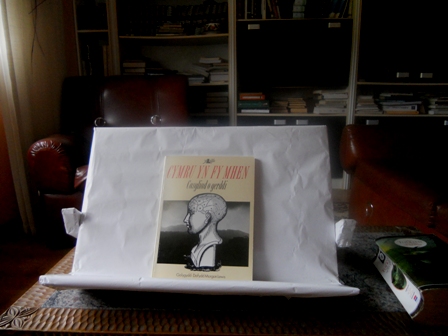
I have been reviewing my translation of Pwyll yn Annwfn, the beginning of the first branch of the Mabinogi. I start to understand the story of Pwyll in a different way. At least this fragment. More like a subtle description of nature, an explanation of the world, a Weltanschauung; rather than history of old lineages, my first approach, I must acknowledge.
I spend much time reading these days. I built a simple reading rest with a piece of plywood and part of a hard board. Not a piece of art but it took me less than half an hour to find the elements and assembly them. It is cheap and, above all, useful. Almost a must when you have to stay long hours in front of a page.
So apart from going to the beach when it is sunny and taking a look at some plants (potatoes among them, of course) from time to time, unless I find a new job in a construction site (not many available now), I shall devote myself mainly to translation this summer. |
|
|
|
|
| Turnips and broadleaf weeds |
|
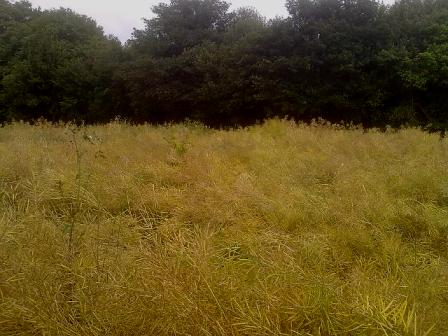
I spent the day in some fields that have not been cultivated this year. After harvesting the potatoes the soil was tilled and left flat. Then turnips were sowed, seeds scattered over the land immediately after cultivation. Since then, apart from picking off the leafy stems of course, no other action has been carried on in this plot. No other crops were rotated, the soil is going to rest so turnips could grow to their full, senesce and produce their seed crop, picked again to be sowed in other fields after a new potato harvest cycle is completed.
Besides a complementary crop with its seasonal sprouts, turnips are used for biological control of weed species. Appropriate cultivation plus turnips seedling vigor shade other competing plants, first forming a cover that occupies almost all available space during the first months, then growing up and using resources that effectively suppress any other broadleaf species.
Well into a new annual cycle turnips are still absolutely dominant in the field. |
|
|
|
|
| A garden over concrete |
|
| I have just quit my job in construction safety today to take part in a new project for the next two or three weeks: building a garden on the flat roof of a parking. |
|
|
|
|
| On the sources of life (and II) |
|
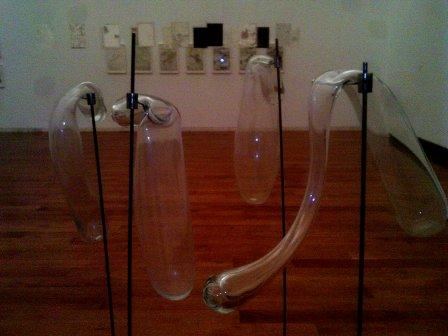
I proceed with LENTURA in a similar way to LENTOR. A search in the dictionaries brings 12 results: 11 with the meaning of 'humidity'; 5 of these definitions specify that it is a 'humidity of the soil' and 2 relate this moist with the seasons. Only 1 dictionary turns up this trend and connects LENTURA to warmth, although it must be noted that LENTURA appears as a variant of LENTOR, that is, LENTOR is the defined headword.
The following table compares the results:
| Semantic tract | LENTOR | LENTURA |
| +warmth | 4 | 1 |
| +humidity | 4 | 11 |
| +slowness | 4 | 1 |
Clearly, LENTOR and LENTURA can be regarded as different terms. LENTOR covers both meanings of warmth and humidity whereas LENTURA is much more specific, only related to 'humidity' and more specifically 'humidity of the soil that changes with the seasons'.
A search for LENTURA (with)in the corpus confirms this point. The lemma offers 130 results.
I limit my research to the first 57 entries (up to the year 1979). I must admit that the main reason for doing so is time, that is, I am doing this for the fun of it, but that doesn't mean that checking every single entry is not an arduous task ! ;-) Anyway, the span is wide and representative enough.
The data studied are the most valuable for diachronic analysis, too, as it is the precedent in a chronological succession.
So, here it is. This time I used all the context available from the very beginning. I only reviewed entries to confirm that I did not leave any unchecked and to pick up any particular points when further attention was required.
The first noticeable conclusion is that the semantic field of soil, ground, is absolutely dominant. While LENTOR could be found applied to plants and the sun, LENTURA is predominately present in the earth: 51% of the entries mention LENTURA as inherent to the land whereas this percentage is as low as 7% for LENTOR.
For the main and almost exclusive meaning of 'moist', entries where the semantic-tract is well-explicit (24) reveal (16) 'moist of the soil' as an element inherent of fertile lands, the weather not mentioned. From some examples it can be deduced that the LENTURA disappears with the summer season and under too much heat from the sun. In (4) cases this 'moist' appears to come in from the rain, (1) from the 'dew' and another (1) from the snow. For (1) entry, rather than simply moist, LENTURA appears as a flow or stream.
The range of meanings is reduced and apart from that of 'humidity or moist of the soil' (24) any other semantic tracts are almost anecdotal: only (2) entries are explained as 'warmth'. In (2) cases an idea of +vital-force could be inferred although never as distinctly as for LENTOR.
The number of ambiguous entries is very high (29), although the idea of +moist is almost always present; that is, as it happened for this category in LENTOR, a specific semantic tract could not be clearly inferred. The context is always more easily explained with the idea of LENTURA as 'humidity' or 'fertile land'. For instance the soil is mentioned in (11) entries. Only (5) appear associated to the semantic field of the body: heart, lips, womb, face, body. +Warmth explains the meaning of these sentences, although the idea of +humidity could also be present sometimes. I repeat, the context is not self-explanatory enough, so they are all left as ambiguous, although a more detailed study would bring more significative results.
The following table compares the semantic tracts of both LENTOR and LENTURA. The tract +moist is used now instead of +dampness as it better describes the meaning of LENTURA while keeping its relevancy for LENTOR.
| Semantic tract | LENTOR(entries) % | LENTURA (entries) % |
| +warmth | (20) 35.1% | (2) 3.5% |
| +moist | (7) 12.3% | (24) 42.1% |
| +vital-force | (7) 12.3% | (2) 3.5% |
| ambiguous | (20) 35.1% | (29) 50.9 % |
| non ascribed | (3) 5.3% | - |
From these results it looks like LENTURA and LENTOR even if belonging to the same semantic family (it is the same root) differ widely in the proportion of tracts of their semantic field. If we compare them in terms of WARMTH : MOIST : VITAL-FORCE we get 10 : 3.5 : 3.5 for LENTOR and 1 : 12 : 1 for LENTURA.
There is an easy grammatical explanation for this divergence: both terms differ in the suffix -A (LENTUR-A) most often a mark of gender in Romance languages. Not only. In Portuguese this morpheme can also come from an actual distinction in the physical object, measurable in terms of size or extension. Although it is an obvious, regular and intuitive derivation, it usually implies two different entries in dictionaries as the terms derived this way are not synonymous but quite distinct realities: related, yet bearing on well defined semantic boundaries.
Some examples: Portuguese POÇO is a well or a shaft whereas POÇA is a puddle or a pool.
RIO is a river, whereas RIA is an estuary, the tidal entry of the sea within a river.
Even if the divergence looks just grammatical, they are couples each term autonomous, different enough to be considered independent lexical units. It is the same morpheme with an obvious and easily inferred relationship: the appreciation of different measurable qualities in the real object sprout different terms.
They become lexical couples within a paradigmatic relationship, one term feminine, the other masculine; most of the semantic tracts are shared. The significant distinction is quantitative, feminine representing the object with the widest or bigger surface.
This morphological feature could well explain why LENTURA is applied to the soil (wide) whereas LENTOR is more likely to be vapour or dampness (small drops). However, it does not solve out why the proportions of each semantic tract differ so much. This proportional divergence shows a more advanced level of specialization for each term of the couple.
There is some meaningful morphologic information not analysed yet.
Both LENTOR and LENTURA can be explained within the following morphological sequence : ROOT + DERIVATIVE SUFFIX + INFLECTION.
The grammatical suffix or inflection has been already explained. The derivative suffix -/OR/ shows no difficulty: it is a morpheme for a common agent or instrument of action, quite common in European languages.
From here this process of specialization can be understood:
* The root LENT- holds all the common tracts.
* Derivation is made in terms of agent or instrument.
* When a particular agent or instrument becomes too distinct a new term shows up. Here a morpheme that usually indicates a measurable divergence is used.
* The tracts that are more operative remain relevant whereas the others become less evident. Thus, although the idea of LENTURA still can hold +warmth, +vital-force, it is more deeply, almost exclusively associated, with +moist and the earth, the agent or instrument.
To end up, and just as a way to justify the work of so many lexicographers that preceeded this study and made this short article possible: the fact that both terms hold a paradigmatic, all right, grammatical! relationship, almost forces to regard them as close synonyms, although research on the context shows up a high level of specialization.
That's also the reason why, despite too much rain, LENTURA and LENTOR did not split enterely: still waters run deep. Old LENT- remained equivalent to warm and (for instance!!!) fertile HUMOR. Too subtle, yeah, yet well enough to rise up the SPRING. Weather permitting, of course.
*************
Picture: Emanados a work by Anna Maria Maiolino exhibited at Centro Galego de Arte Contemporánea, Santiago de Compostela. The form is left as if the liquid was still being sprung, warm enough to flow. All the ideas used in this article are present: liquid, warmth, vital-source.
From the leafet published by CGAC. Anna M.M. explains:'The liquid balls of incandescent glass soon become simple oval forms, fragile, like life itself. They are containers of vital breadth.' |
|
|
|
|
| y=mx + c (reviewed) |
|

The female flowers of the hazel are sprouting their reddish tops.
The weather is sunny after some days of moderate rain.
The willows appear white with flowering catkins, the alder has grown its dark cones, blackthorns full bloomed, the joy of spring spreads everywhere and I, I... well, be it the weather, be it the trees, be it that I have to start a new job again, here I am too, giving my touch of colour to the landscape with the red-to-yellow of the exposed soil. My brush, a Howard rotavator. :-)
I work a small piece of land that has been previously plowed. Not the whole plot, just a small part of it, some rows to open the early season.
I need to calculate the minimum optimal area to be planted.
I am a machinist, a tractor driver. From my farmer point of view a row is the unit.
The planting machine is leveled and adjusted to plow rows 75 cm from one another. The widest machine to be used, a sprayer, covers 12 rows. The most effective use would be an even number of turns as the plot is entered and sorted by the same place and, well, I want to take advantage of that way back too! :-)
So 12 rows * 2 turns = 24 would be the most effective minimum number of rows to plant.
With the rotavator I smooth the soil so I have no reference of rows at all. I convert the length of rows to metres and stick a piece of a branch to mark the area. 24*0.75=18m. minimum effective width.
Two months ago I spent a whole Saturday morning converting the distance to different stars from light years to kms and then to earth years of distance at a velocity of 300 km/h. Not that I want to move that far away, I just wanted to exercise my brain for a while: the exponents became meaningless for practical comparisons (next time I'd try to calculate the total number of tubercles produced in the world, for instance), but at least I could better understand how different units are more operative than others!
The easiest way to calculate the area to be planted would be measuring the sprayer at its full width (9m) and then calculate the product 9m * 2 (number of turns) = 18m. That is, no need of counting rows at all!
Be it the power of experience, as it is by experience that the number or rows needed is known, be it an atavism or just a tractor driver way of thinking, at least for these plots there is a basic unit that appears to be graphic an intuitive without losing exactitude and transferability to SI units of length: the line, a row.
Now, as the hazel female flowers keep sprouting, the sun shines over a wet soil: good weather for the best results of potato plants per square metre, sure, and ... per row too! |
|
|
|
|
| On the sources of life (I) |
|
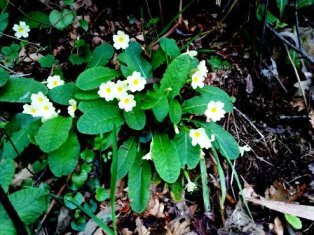 After having read Maitani?s article on LENTEN I thought of Galegan 1 LENTOR and LENTURA. Both appear as synonyms in the dictionaries since the 19th century. I did some research to find out if we are faced with the same term.
So first, of course, I took a look at the dictionaries. The older the better :-)
A definition can be found in Marcial Valladares (1884) 2:
LENTURA: 'Dampness of the soil needed for the plants to grow. It changes if the seasons are more or less dry. It disappears during the summer.'
Most of the dictionaries have kept a definition related to 'humidity of the soil, dampness'. Valladares' definition seems to be wider and more specific so I decided to take a look at the real use of both LENTOR and LENTURA in texts other than dictionaries.
A first quick search for LENTOR at the corpus available on-line at Tesouro Informatizado da Lingua Galega brought (57) results. To my surprise the main meaning seems to be that of 'warmth' and not 'humidity'. I identified (8) entries as unequivocally related to the idea of 'heat'. Only (3) can bear the idea of 'dampness' associated to the concepts of dew, alder and elderberry. The other (46) are less specific and seemed too ambiguous to me to be used as examples, that is, no significant value can be unequivocally inferred. This gives us a low relevance of the data, with only 19% of significant results.
So I did a second search amplifying the context. Obviously this has resulted in a higher number of significant entries. The main meaning is still that of +warmth with (20) entries where this value can be clearly inferred and associated to semantic fields of the sun (7 entries), human body such as in warmth of a hand, breast, heart, womb (5), adjectives with the idea of 'moderate hot' (4), fire (2) and bed (2).
Within amplified context the main difference is that a new distinctive meaning shows up. It is that of fertilizing-strength or fertilizing-power or vital-force with (7) entries of which: (4) appear associated to the soil (fertile soil or land) and (3) stating LENTOR as an abstract fecundating power.
The idea of dampness comes much more blurred in this second turn. What I previously noted as clear appears more vague now. The lentor of the dew is accompanied with adjectives such as warm, the lentor of the alder is compared with the cheeks of a human body (some idea of redness and hence heat is implied) and finally the lentor of the strawberry appears more related to some natural phenomenon not experienced with the visual senses: it is compared with the ability of the mole ( Talpa) to find its path in the darkness. Although some idea of dampness is kept, the value of +warmth could be also applied. With this second search I could add (2) more entries where LENTOR appears associated to the river shores and humidity, and another (2) with the idea of dew or vapour. Hence (7) entries are associated to +dampness.
There are (3) entries where I think the lemma does not match LENTOR. Two of them seem irregular derivatives of lento (slow) to me, and the other one appears to be a misprint of alento (breath). Although particularly in the second case it would be well worth studying possible influences and meaning-shifts by a relation of paronomasia, I think these entries, even if within an homophonic relationship, do belong to a different lemma and thus should be more carefully reviewed and noted if not ascribed with a different semantic tag within the corpus.
The rest of the entries (20) appear too vague to me yet. Sure the study of the semantic fields would allow a better ascription to more specific categories. The study of the authors could point out new contexts and thus lead to a better definition too. Probably the third review would solve out more entries kept as ambiguous by now.
The fact that I leave these entries as not relevant does not mean that the idea of +warmth or +vital-force is not present. It is only that I cannot unequivocally infer the meaning from the context. That is, the output is not self-explanatory enough. In fact within all these entries the idea of +warmth of +vital-force is the most probable meaning. Most of the concepts that appear whithin these non-self-explanatory-enough although non-contradictory with the meanings of +warmth and +vital-force instances are nature-related: nature, chestnut tree ( Castanea sativa), dawn, morning, afternoon, sand, arable land, yet there are also some abstract names such as life, youth, love and instant.
So contextual results slightly differ or would lead to a more precise definition than the one given at the beginning of this article. From contextual data LENTOR seems to be the warmth and vital-force that brings or supports life in nature, particularly in vegetal life.
The following table illustrates the results: | Semantic tract | First search (entries) % | Amplified corpus (entries) % |
| +warmth | (8) 14% | (20) 35% |
| +dampness | (3) 5% | (7) 12% |
| +vital-force | - | (7) 12% |
| ambiguous | (46) 81 % | (20) 35% |
| non ascribed | - | (3) 5% |
(1) For the position of Galegan dialects within Portuguese language vid. for instance: Cunha, C. & Cintra, L.: Breve Gramática do Português Contemporâneo. Lisboa: Edições João Sá da Costa (2002), pp. 5-17. ^ (2) Searchable on-line at http://sli.uvigo.es/ddd/index.html. A search for LENTOR brought the following results out from (7) different dictionaries: LENTOR is registered as the same entry or equivalent to LENTURA (4) times. It is also defined as 'warmth or moderate heat' (4), 'humidity' (4), 'slowness' (4). In my opinion LENTOR as 'slowness' is a case of homophony rather than the same lemma. ^ |
|
|
|
|
| A tunnel |
|
| I have a new job. At present I am working in a tunnel for rail traffic. I am building the in situ concrete slab of the railway track. |
|
|
|
|
| Training |
|
I am following a course on construction site safety to upgrade competencies gained on-the-job (and because it is almost mandatory if I want to go on in the sector too).
|
|
|
|
|
| Job done |
|
My contract job finishes this week. As the structure is almost ready and it has been built well in time, the work overload (the reason for me to be hired) has decreased.
I have been trained into the most important safety techniques in a construction site and have had the opportunity to use some new machines.
Now I'll take some days for myself and next... well, it is too soon yet and it does not depend completely on me to say what comes next.
|
|
|
|
|
| Support structure for kiwi vines (coda) |
|
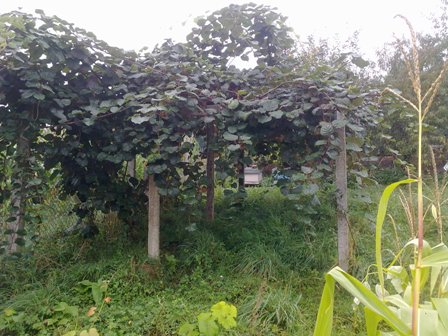
As the kiwifruits have grown and the first stormy winds and showers have arrived, the support structure shows sturdiness. |
|
|
|
|
| Harvesting |
|
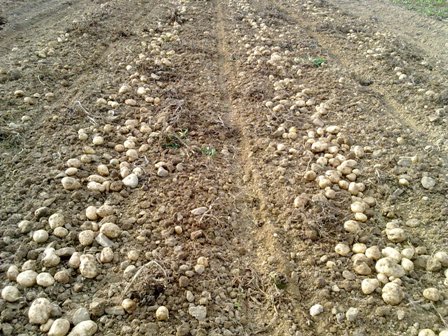
A new crop has been harvested this month. As it has been a very good year for potatoes a first more-careful-than-usual selection was made in the plot leaving the small number of damaged tubercles or those with green surfaces.
Now potatoes are stored and will be trimmed and selected again, this time according to size. |
|
|
|
|
|
|
|
|
|
